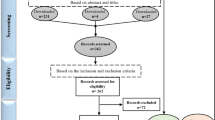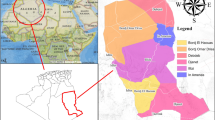Abstract
Artificial neural network (ANN) and Adaptive Neuro-Fuzzy Inference System (ANFIS) have an extensive range of applications in water resources management. Wavelet transformation as a preprocessing approach can improve the ability of a forecasting model by capturing useful information on various resolution levels. The objective of this research is to compare several data-driven models for forecasting groundwater level for different prediction periods. In this study, a number of model structures for Artificial Neural Network (ANN), Adaptive Neuro-Fuzzy Inference System (ANFIS), Wavelet-ANN and Wavelet-ANFIS models have been compared to evaluate their performances to forecast groundwater level with 1, 2, 3 and 4 months ahead under two case studies in two sub-basins. It was demonstrated that wavelet transform can improve accuracy of groundwater level forecasting. It has been also shown that the forecasts made by Wavelet-ANFIS models are more accurate than those by ANN, ANFIS and Wavelet-ANN models. This study confirms that the optimum number of neurons in the hidden layer cannot be always determined by using a specific formula but trial-and-error method. The decomposition level in wavelet transform should be determined according to the periodicity and seasonality of data series. The prediction of these models is more accurate for 1 and 2 months ahead (for example RMSE = 0.12, E = 0.93 and R 2 = 0.99 for wavelet-ANFIS model for 1 month ahead) than for 3 and 4 months ahead (for example RMSE = 2.07, E = 0.63 and R 2 = 0.91 for wavelet-ANFIS model for 4 months ahead).









Similar content being viewed by others
References
Abghari H, Ahmadi H, Besharat S, Rezaverdinejad V (2012) Prediction of daily pan vaporation using wavelet neural networks. Water Resour Manag 26:3639–3652
Adamowski J, Fung Chan H (2011) A wavelet neural network conjunction model for groundwater level forecasting. J Hydrol 407:28–40
Adamowski J (2007) Development of a short-term river flood forecasting method based on wavelet analysis. Polish Academy of Sciences Publication, Warsaw, 172
Adamowski J, Sun K (2010) Development of a coupled wavelet transform and neural network method for flow forecasting of non-perennial rivers in semi-arid watersheds. J Hydrol 390(1–2):85–91
Aksoy H (2001) Storage capacity for river reservoirs by wavelet-based generation of sequent-peak algorithm. Water Resour Manag 15:423–437
Anctil F, Tape D (2004) An exploration of artificial neural network rainfall–runoff forecasting combined with wavelet decomposition. J Environ Eng Sci 3:121–128
Aqil M, Kita I, Yano A, Nishiyama A (2007) Analysis and prediction of flow from local source in a river basin using a Neuro-fuzzy modeling tool. J Environ Manag 85(1):215–223
Ayvaz MT, Karahan H, Aral MM (2007) Aquifer parameter and zone structure estimation using kernel-based fuzzy c-means clustering and genetic algorithm. J Hydrol 343:240–253
Beriro DJ, Abrahart RJ, Mount NJ, Nathanail CP (2011) Letter to the editor on “Precipitation forecasting using wavelet-genetic programming and wavelet-neuro- fuzzy conjunction models”. Water Resour Manag 25:3135–3152
Campisi-Pinto S, Adamowski J, Oron G (2012) Forecasting urban water demand via wavelet-denoising and neural network models. Case study: city of syracuse, Italy. Water Resour Manag doi:10.1007/s11269-012-0122-1
Cannas B, Fanni A, Sias G, Tronei S, Zedda MK (2006) River flow forecasting using neural networks and wavelet analysis. In: Proceedings of the European Geosciences Union pp 234–243
Castellano-Méndez M, González-Manteiga W, Febrero-Bande M, Parada-Sánchez JM, Lozano-Calderó NR (2004) Modelling of the monthly and daily behavior of the runoff of the Xallas river using Box–Jenkins and neural networks methods. J Hydrol 296:38–58
Chang FJ, Chang YT (2006) Adaptive neuro-fuzzy inference system for prediction of water level in reservoir. Adv Water Resour 29:1–10
Chidthong Y, Tanaka H, Supharatid S (2009) Developing a hybrid multi-model for peak flood forecasting. Hydrol Process 23:1725–1738
Chou Ch (2011) A threshold based wavelet denoising method for hydrological data modelling. Water Resour Manag 25:1809–1830
Christopoulou EB, Skodras AN, Georgakilas AA (2002) The “Trous” wavelet transform versus classical methods for the improvement of solar images. In: Proc. 14th International Conference on. Digit Signal Process 2:885–888
Chu HJ, Chang LC (2009) Application of optimal control and fuzzy theory for dynamic groundwater remediation design. Water Resour Manag 23:647–660
Cohen A, Kovacevic J (1996) Wavelets: the mathematical background. Proc IEEE 84:514–522
Daliakopoulos I, Coulibalya P, Tsani IK (2005) Groundwater level forecasting using artificial neural network. J Hydrol 309:229–240
Daubechies I (1990) The wavelet transform, time-frequency localization and signal analysis. IEEE Trans Inf Theory 36:961–1005
Elman JL (1988) Finding structure in time. CRL Technical Report 8801. Centre for Research in Language, University of California at San Diego
Fernando AK, Kerr T (2003) Runoff forecasting with artificial neural network model. The 3rd Pacific Conference on storm water and aquatic resource protection. New Zealand Water and Wastes Association publication of conference proceedings in CD-ROM, Auckland
Firat M, Turan ME, Yurdusev MA (2009) Comparative analysis of fuzzy inference systems for water consumption time series prediction. J Hydrol 374:235–241
Grossman A, Morlet J (1984) Decompositions of hardy functions into square integrable wavelets of constant shape. J Math Anal 15:723–736
Haykin S (1999) Neural networks, a comprehensive foundation, 2nd edn. Prentice-Hall, Englewood Cliffs, pp 135–155
Hsu KC, Li ST (2010) Clustering spatial–temporal precipitation data using wavelet transform and self-organizing map neural network. Adv Water Resour 33(2):190–200
Jang JSR (1993) ANFIS: adaptive network based fuzzy interface system. IEEE Trans Syst Man Cybern 23:665–685
Jang JSR, Sun CT (1995) Neuro-fuzzy modeling and control. Proc IEEE 83:378–406
Jang JSR, Sun CT, Mizutani E (1997) Neuro-fuzzy and soft computing: a computational approach to learning and machine intelligence. Prentice-Hall, Eaglewood cliffs, pp 665–685
Kavzoglu T, Mather PM (2003) The use of back-propagating artificial neural networks in land cover classification. Int J Remote Sens 24:4907–4938
Kisi O (2008) Stream flow forecasting using neuro-wavelet technique. Hydrolog Process 22:4142–4152
Kisi O (2009) Neural networks and wavelet conjunction model for intermittent stream flow forecasting. J Hydrol Eng 14:773–782
Kisi O, Shiri J (2011) Precipitation forecasting using wavelet-genetic programming and wavelet-neuro-fuzzy conjunction models. Water Resour Manag 25:3135–3152
Kisi O, Shiri J (2012) Reply to discussion of “Precipitation forecasting using wavelet-genetic programming and wavelet-neuro-fuzzy conjunction models”. Water Resour Manag 26:3663–3665
Konikow LF, Kendy E (2005) Groundwater depletion: a global problem. Hydrogeol J 13:317–320
Lafrenière M, Sharp M (2003) Wavelet analysis of inter-annual variability in the runoff regimes of glacial and nival stream catchments, Bow Lake, Alberta. Hydrolog Process 17:1093–1118
Loboda NS, Glushkov AV, Knokhlov VN, Lovett L (2006) Using non decimated wavelet decomposition to analyse time variations of North Atlantic Oscillation, eddy kinetic energy, and Ukrainian precipitation. J Hydrol 322:14–24
Maier HR, Dandy GC (1998) The effect of internal parameters and geometry on the performance of back-propagation neural networks: an empirical study. Environ Model Softw 13:193–209
Mallat SG (1989) A theory for multi resolution signal decomposition: the wavelet representation. Trans Pattern Anal Mach Intell 11:674–693
Ministry of Energy, Khorasan water authority (2007) Statistical data of groundwater.
Mohammadi K (2008) Groundwater table estimation using MODFLOW and artificial neural networks. Water Sci Tech Libr 68:127–138
Nourani V, Moghaddam AA, Nadiri AO, Singh VP (2008) Forecasting spatiotemporal water levels of Tabriz aquifer. Trends Appl Sci Res 3:319–329
Nourani V, Alami MT, Aminfar MH (2009) A combined neural-wavelet model for prediction of watershed precipitation, Lighvanchai, Iran. Eng Appl Artif Intell 16:1–12
Nourani V, Kisi Z, Mehdi K (2011) Two hybrid artificial Intelligence approaches for modeling rainfall-runoff process. J Hydrol 402:41–59
Partal T (2009) River flow forecasting using different artificial neural network algorithms and wavelet transform. Can J Civ Eng 36:26–38
Partal T, Kisi O (2007) Wavelet and neuro-fuzzy conjunction model for precipitation forecasting. J Hydrol 342:199–212
Pasquini AI, Depetris PJ (2007) Discharge trends and flow dynamics of South American rivers draining the southern Atlantic seaboard: an overview. J Hydrol 333:385–399
Prinos ST, Lietz AC, Irvin RB (2002) Design of a Real-Time groundwater level monitoring network and portrayal of hydrologic data in southern florida. USGC Water Resources Investigations Report. 01-4275.
Pulido-Calvo I, Gutierrez-Estrada JC (2009) Improved irrigation water demand forecasting using a soft-computing hybrid model. Biosyst Eng 102(2):202–218
Rajaee T (2011) Wavelet and ANN combination model for prediction of daily suspended sediment load in rivers. Sci Total Environ 409:2917–2928
See L, Openshaw S (1999) Applying soft computing approaches to river level forecasting. Hydrolog Sci J 44:763–777
Shirmohammadi B, Vafakhah M, Moosavi V, Moghaddamnia A (2012) Application of several data-driven techniques for predicting groundwater level. Water Resour Manag. doi:10.1007/s11269-012-0194-y
Sreekanth P, Geethanjali DN, Sreedevi PD, Ahmed S, Kumar NR, Jayanthi PDK (2009) Forecasting groundwater level using artificial neural networks. Curr Sci 96(7):933–939
Trichakis IC, Nikolos IK, Karatzas GP (2009) Optimal selection of artificial neural network parameters for the prediction of karstic aquifer’s respons. Hydrolog Process 23:2956–2969
Wang W, Ding S (2003) Wavelet network model and its application to the predication of hydrology. Nat Sci 1:67–71
Weng H, Lau KM (1994) Wavelets, period doubling, and time-frequency localization with application to organization of convection over the tropical western Pacific. J Atmos Sci 51:2523–2541
Yasuri M (2006) The study of regional GIS of Mashhad. Research plan of ferdowsi university of mashhad. 159p. (In Persian)
Yin D, Shu L, Chen X, Wang Z, Mohammed ME (2011) Assessment of sustainable yield of karst water in Huaibei. Water Resour Manag 25(1):287–300
Zhang X, Liang F, Yu B, Zong Z (2011) Explicitly integrating parameter, input, and structure uncertainties into Baysian Neural Networks for probabilistic hydrologic forecasting. J Hydrol 409(3–4):696–709
Author information
Authors and Affiliations
Corresponding author
Rights and permissions
About this article
Cite this article
Moosavi, V., Vafakhah, M., Shirmohammadi, B. et al. A Wavelet-ANFIS Hybrid Model for Groundwater Level Forecasting for Different Prediction Periods. Water Resour Manage 27, 1301–1321 (2013). https://doi.org/10.1007/s11269-012-0239-2
Received:
Accepted:
Published:
Issue Date:
DOI: https://doi.org/10.1007/s11269-012-0239-2




